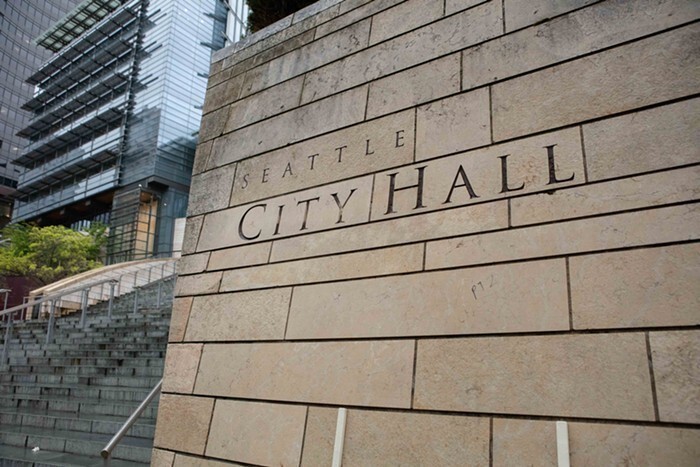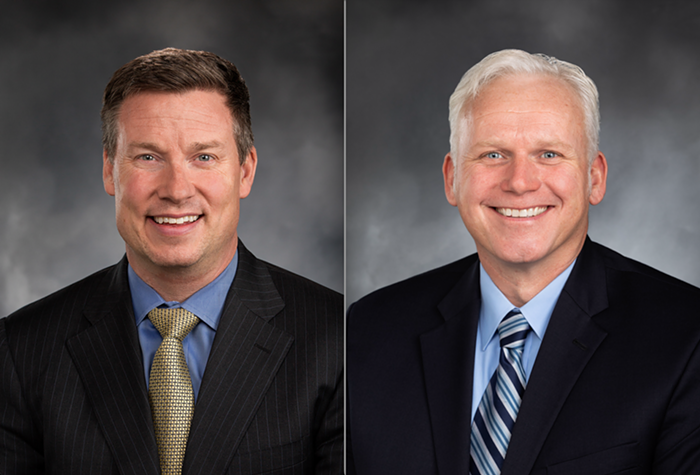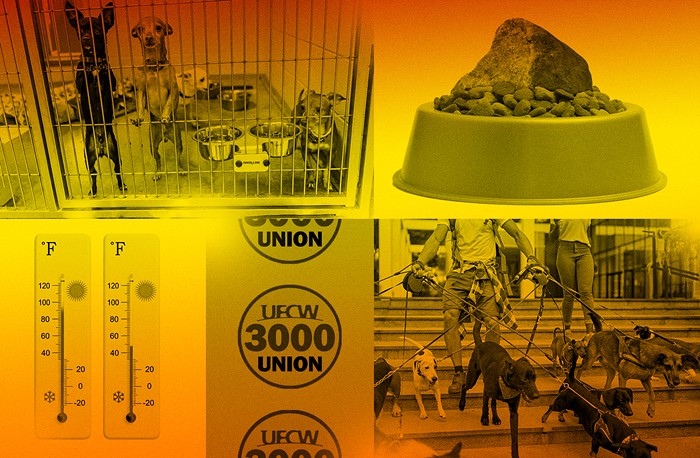The week that the Seattle Monorail Project unveiled its $11 billion finance plan, The Stranger pounced ["Back to the Voters," June 30]. As long-time backers of elevated rapid transit in theory, and an extended Seattle monorail system in particular, we wanted to be one of the first voices in town to give the Seattle Monorail Project's junk-bond plan an unequivocal thumbs down. (We were the first media to make the damning finance documents available online, linking to the shocking bond schedule from our website.) We demanded that the agency come up with a new finance plan; we called on Executive Director Joel Horn to resign; and—honoring the populist legacy of the monorail—called for a revote on any new financing package.
We were clear about what was wrong with the SMP: It was the finance plan, not the system itself. A major Fortune 500 engineering firm was ready to build the 14-mile route, a route that had been forged after hundreds of public meetings and city council scrutiny. Unfortunately, the SMP had overestimated its tax base by about 30 percent—leading to a 30 percent revenue shortfall. The money wasn't there. Thus, the junk bond plan.
It's a month later now, and events have unfolded along the lines we proposed. The SMP board flatly rejected the finance plan. Horn resigned. The agency is looking at redoing the financing (although they're also looking at a re-bid and a shorter line as well). And city leaders like Mayor Greg Nickels have called for a revote on a new plan.
Unfortunately, something else is in full swing: a fit of anti-monorail hysteria. Alarmist columnists (like the Seattle Post-Intelligencer's Robert Jamieson), opportunist politicians (like Casey Corr), and the same old downtown property owners who've opposed elevated rapid transit all along (like Washington Mutual), are misleading the public in an attempt to re-open a debate that dates back to the first monorail vote in 1997. Anti-monorail voices are now cynically exploiting the lame financial plan as an indictment of the monorail idea itself.
"Retreat, before a bad idea spreads like a contagion with lots of cost to the public—and no cure," Jamieson wrote in the P-I, dishonestly conflating the faulty finance plan with monorail technology last week and calling on Seattle to abandon its "dream." By using the finance plan to dredge up the emotional but hackneyed arguments of the past—the monorail is a pipe dream; the technology is wrong for Seattle (do we have to have the views debate, again?)—Jamieson and others are attempting to take this city backward 10 years.
Critics have every right to lambaste the SMP's financial plan, but they're being disingenuous (or ignorant) when they switch into "I told you so" mode. Let's be clear: In 2000, the monorail movement was caught with its pants down: no budget, no builder, and no viable plan. But smart transit activist Peter Sherwin rallied the troops, ran a new initiative, and the monorail movement got its act together. On the back of a 63.5 percent win at the polls in 2004, the "dream" emerged with a builder (a consortium headed up by a Fortune 500 company, the $9.3 billion Fluor Corporation); a meticulous blueprint to build the system (through Seattle Center, thank God); and an affordable price tag. Indeed, at $2.1 billion, or $150 million per mile, the monorail system is less expensive than Sound Transit's light rail. Sound Transit's light rail line—which has been shortened by a third—is currently at least 100 percent more expensive than what voters approved in 1996 at roughly $220 million per mile.
More noteworthy, in comparison to the monorail's "outrageous" 50-year bonds, Sound Transit argued and won in Washington State Supreme Court in 2003 that the agency has open-ended taxing authority. That's right, Sound Transit has the legal authority to tax you indefinitely to meet its massively over-budget run to the U-District (currently an estimated $4.5 billion vs. the voter-approved $2.4 billion).
A botched finance plan may have put the monorail at risk, but it doesn't change this fundamental truth: Elevated rapid transit works. Elevated trains work in cities like Chicago, New York and Vancouver; existing monorail systems work in cities like Osaka. Elevated transit provides an attractive alternative to driving by rewarding people who leave their cars behind with swift trips across the city. Unlike buses or light rail, the monorail never gets stuck in traffic. The monorail plan would provide an estimated 20.4 million passenger rides each year by 2020—an estimated 69,000 every workweek.
Elevated transit is also an efficient way to build mass transit in Seattle because it doesn't require tunnels and it uses already existing rights of way—AKA city streets. (This tunneling business that Sound Transit's light rail plan depends on has already forced the agency to abandon the First Hill station—it would have added $350 million in costs—and we wouldn't be surprised if the cost of the underground station at Beacon Hill balloons beyond expectations this fall. Watch for that bombshell.)
More important: Elevated rapid transit would link Seattle's far-flung neighborhoods and inspire smart new growth around its stations. As gas prices rise and a world oil crisis looms, building rapid transit in Seattle is more important than ever to the future economic viability of our city.
When we called for the re-vote on a new financing package we acknowledged—given the beating the monorail was taking in the media in the immediate wake of the lousy financial plan—the potential risk. Namely, it could lose. And given last week's polling data (56 percent against the monorail), it's clear that risk is real. But that's a risk monorail supporters should be willing to take.
We know the odds are long. The ill-advised finance plan submitted earlier this summer cast a pall over the project. And now cynical municipal candidates looking for traction this season, lazy columnists looking to mine easy outrage, and big property owners who have funded the anti-monorail efforts all along, are all doing their best to pretend the bad financing proposal is an indictment of the monorail idea itself.
They're wrong—just as they were wrong in 1997, 2000, 2002, and 2004. Seattle needs elevated rapid transit, and Seattle voters have backed it time and again. We're willing to put our trust in Seattle voters. A new campaign will force a discussion of what's really at issue—the financial plan, not the concept or technology. Voters deserve an unfettered look at a finance plan that can support a system they've already approved. They don't need cynical opportunists with ulterior motives—people who've lost on this issue over and over again—hijacking the debate.


















